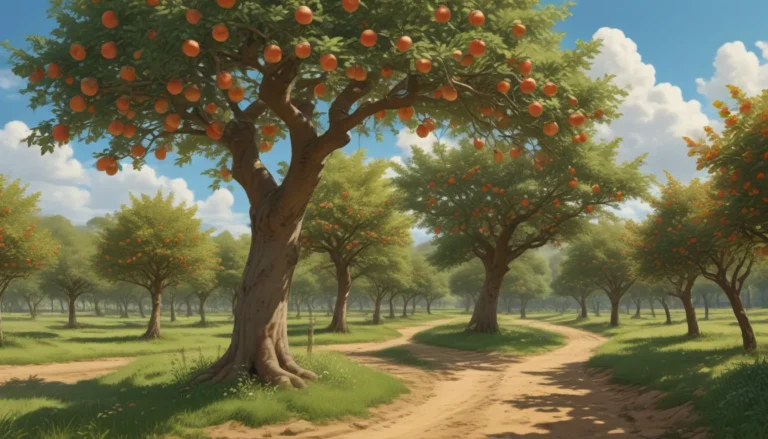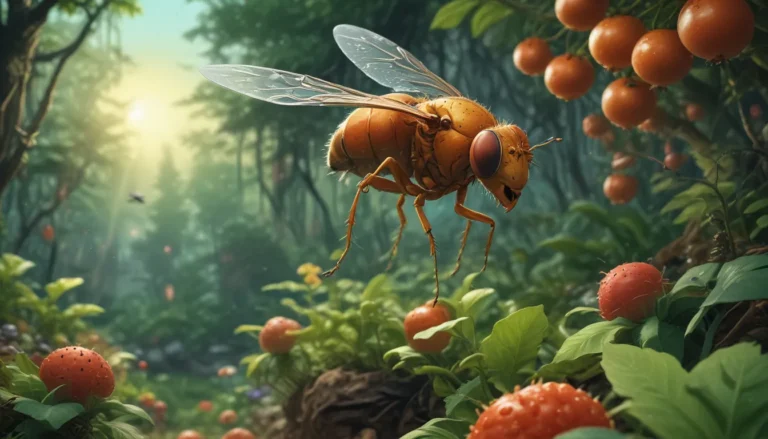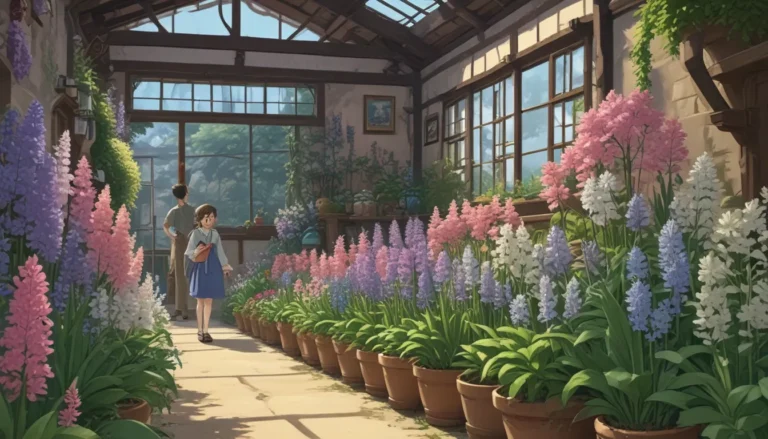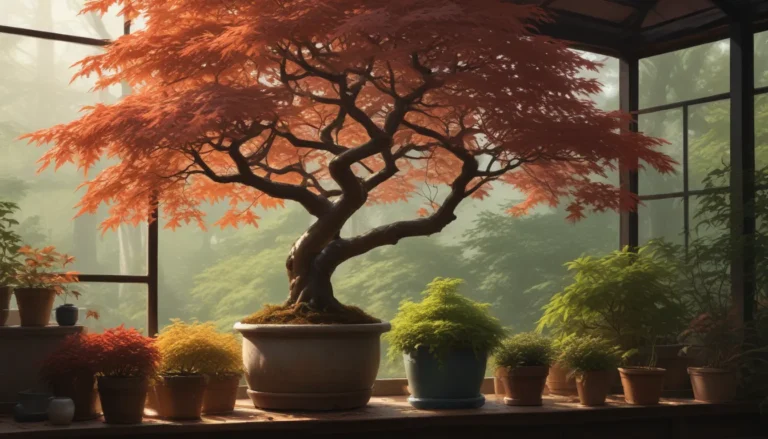13 Eerie Plants to Spice Up Your Halloween Decor

Halloween is just around the corner, and it’s the perfect time to add some spooky flair to your home and yard decor. Instead of reaching for those plastic decorations that end up in the trash year after year, why not consider growing your own creepy plants? Nature is full of plants with eerie colors, twisting shapes, and bizarre features that are sure to give you the heebie-jeebies.
In this comprehensive guide, we’ll introduce you to 13 of the best creepy plants for Halloween and beyond. From carnivorous plants to toxic flowers, these specimens are bound to add a touch of the macabre to your surroundings. So, let’s dive into the world of creepy flora and discover how you can take your Halloween decor to the next level!
1. Bat Flower (Tacca chantrieri)
If you’re looking for a plant that resembles something out of a Halloween movie, look no further than the Bat Flower. With its deep purple tropical flowers that resemble a bat in flight, this plant is sure to make a statement. Easy to grow indoors, the Bat Flower thrives in shady areas with high humidity, making it a perfect addition to your Halloween decor.
Key Features:
– Unusual deep purple flowers with ruffled petals and long whiskers
– Native to tropical rainforests in Southeast Asia
– Can grow up to a foot wide with whiskers up to 28 inches long
2. Black Elephant Ears (Colocasia esculenta)
For a touch of darkness in your garden, consider adding Black Elephant Ears to your collection. With massive black and purple heart-shaped leaves that can reach up to three feet in length, this striking plant is perfect for creating a spooky ambiance. Hardy to Zones 8 and up, the ‘Black Magic’ cultivar is an excellent choice for those looking to add a touch of the macabre to their garden.
Key Features:
– Heart-shaped black and purple leaves
– ‘Black Magic’ cultivar for a striking display
– Can be grown indoors in colder zones with high humidity
3. Cobra Plant (Darlingtonia californica)
If you’re feeling brave, why not try your hand at growing the Cobra Plant? Also known as the California pitcher plant, this carnivorous plant features tubelike leaves that resemble cobras with fangs out, ready to strike. Not for the faint of heart, the Cobra Plant requires specific growing conditions and is recommended for experienced growers of carnivorous plants.
Key Features:
– Carnivorous plant with hooded tubelike leaves
– Requires specific growing conditions
– Seeds available for purchase to grow at home
4. Cockscomb (Celosia cristata)
For a plant that looks straight out of a horror movie, consider adding Cockscomb to your garden. With blood-red flowers that resemble brains, this easy-to-grow annual is perfect for creating a spooky ambiance. Available in a variety of colors, Cockscomb is an excellent choice for both outdoor and indoor Halloween displays.
Key Features:
– Showy, fuzzy, blood-red flowers that resemble brains
– Easy to grow both outdoors and indoors
– Varieties available in pink, orange, yellow, green, and white
5. Corpse Flower (Amorphophallus titanum)
For a truly terrifying addition to your Halloween decor, look no further than the Corpse Flower. As its name suggests, this flower emits a scent similar to rotting meat or trash to attract pollinators. While it may take years for a single flower to bloom, the Corpse Flower is sure to make a lasting impression on your Halloween guests.
Key Features:
– Emit a scent similar to rotting meat
– Seeds available for purchase to grow at home
– Can take years for a single flower to bloom
6. Devil’s Walking Stick (Aralia spinosa)
With sharp spiky stems, leaf stalks, and branches, the Devil’s Walking Stick is a plant that truly lives up to its name. Native to much of eastern North America, this deciduous shrub produces clusters of dark purple or black berries in the fall. Easy to transplant or propagate, the Devil’s Walking Stick is an excellent choice for those looking to add a touch of the supernatural to their garden.
Key Features:
– Armed with sharp spiky stems and branches
– Produces dark purple or black berries in the fall
– Easy to transplant or propagate by division
7. Ghost Plant (Monotropa uniflora)
Also known as Indian pipe or corpse plant, the Ghost Plant is a scary succulent that appears totally white in color due to its lack of chlorophyll. Parasitic in nature, this plant steals nutrients from neighboring plants and can survive in even the darkest of places. While difficult to replicate its growing conditions at home, the Ghost Plant is a fascinating addition to any Halloween display.
Key Features:
– Appears totally white in color due to lack of chlorophyll
– Parasitic in nature, stealing nutrients from neighboring plants
– Survives in dark, damp environments near beech trees
8. Halloween Pansies (Viola x wittrockiana)
For a classic touch of Halloween color, consider adding Halloween Pansies to your garden. Featuring midnight black petals with bright yellow centers, these cold-hardy annuals are perfect for creating a spooky ambiance. Whether grown outdoors or indoors, Halloween Pansies are sure to add a touch of mystery to your fall decor.
Key Features:
– Midnight black petals with bright yellow centers
– Cold-hardy annuals suitable for outdoor and indoor displays
– Seeds available for purchase to grow at home
9. Marigolds (Tagetes patula)
While not the most scary of flowers, Marigolds are a versatile choice for Halloween decor. With their fuzzy orange blooms and strong fragrance, Marigolds are perfect for adding a pop of color to your fall garden. Traditionally used in Day of the Dead celebrations, Marigolds are believed to guide the spirits back to visit their living relatives.
Key Features:
– Fuzzy orange blooms with a strong fragrance
– Traditional flowers for Day of the Dead celebrations
– Available in a variety of colors for fall displays
10. Shameplant (Mimosa pudica)
Known for its bizarre defense mechanism of quickly shriveling up its leaves when touched, the Shameplant is a fascinating addition to any Halloween display. Easy to grow indoors, this tropical weed is best planted in containers to prevent aggressive spreading. With delicate pink pom-pom-like blooms, the Shameplant is sure to captivate your guests this Halloween.
Key Features:
– Quickly shrivels up its leaves when touched
– Grow indoors in containers to prevent spreading
– Delicate pink pom-pom-like blooms
11. Venus Flytrap (Dionaea muscipula)
For a touch of the macabre, consider adding a Venus Flytrap to your Halloween decor. This carnivorous plant lures unsuspecting insects with sweet nectar and traps them within its interlocking teeth. Small in size, the Venus Flytrap is a fascinating addition to any Halloween display and is sure to captivate your guests.
Key Features:
– Carnivorous plant that traps insects with interlocking teeth
– Small in size and easy to grow indoors
– Kits available for purchase to grow at home
12. White Baneberry/Doll’s Eyes (Actaea pachypoda)
Featuring clusters of white berries with dark spots that resemble pupils, the White Baneberry is a popular addition to Halloween displays. Highly toxic to humans and animals, this perennial is easy to grow in moist, well-draining soil. With its unsettling appearance, the White Baneberry is sure to add a touch of the macabre to your garden this Halloween.
Key Features:
– Clusters of white berries with dark spots resembling pupils
– Highly toxic to humans and animals
– Easy to grow in moist, well-draining soil
13. Wolfsbane (Aconitum napellus)
As its name suggests, Wolfsbane is a highly toxic plant with a dark history of use for killing wolves and other carnivores. Featuring lobed purple flowers, Wolfsbane should be handled with caution due to its deadly poison. With a twisted past that dates back to Ancient Rome and Nazi Germany, Wolfsbane is not for the faint of heart.
Key Features:
– Highly toxic plant used for killing wolves and carnivores
– Features lobed purple flowers with deadly poison
– Handle with caution and keep away from children and pets
A Frighteningly Fun Halloween Display
With these 13 creepy plants in your garden, you’re sure to create a Halloween display that will spook your guests and delight trick-or-treaters. From carnivorous plants to toxic flowers, these specimens offer a unique twist on traditional Halloween decor. So, get creative, experiment with different plant combinations, and let your imagination run wild this Halloween season!
What creepy plants do you enjoy growing for Halloween? Share your favorites in the comments below and don’t forget to snap some pictures of your spooky plant displays. And if you’re looking for more Halloween decorating ideas, be sure to check out our recommended articles for inspiration on creating the ultimate haunted garden.
Remember, the key to a memorable Halloween display is creativity, so don’t be afraid to think outside the pumpkin and explore the eerie world of creepy plants for a truly boo-tiful Halloween experience. Happy planting!





